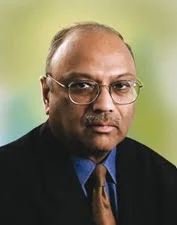Coimbatore Krishnarao Prahalad (1941-2010), who was rated twice in a row as the most influential management thought leader by Thinkers 50 listing of the world’s top business management gurus, passed away on April 16, 2010 in San Diego, California. All through his life, he tried to make corporates more competitive and through them make the world a better place to live in.
In his sudden demise, the world of strategy has lost one of the most “perceptive, innovative, and influential strategic thinkers” of all-time. As against the usual practice, of the academicians, of spinning extension and analog theories around their already proposed fundamental premise, CKP never published two articles on the same topic. He simply opened up so many new lines of enquiry—of seminal nature—throwing open new avenues of research activity for the rest to pursue.
Prahalad, a known maverick, had first come out with his big management idea, ‘core competence’—a competency resulting from an organization’s ability to combine different technologies, learning and relationships that enables it to transcend products and markets, which not only drives a firm’s strategy and business but also, and most importantly, remains difficult to replicate by the competitors— in a 1990 article published in the HBR, jointly with Gary Hamel, his student. It simply asked firms to pause and question themselves as to what their core business proposition is.
In the subsequent book, Competing for the Future that he wrote with Gary Hamel, he came out with a seminal idea, ‘strategic intent’—“stretching limited resources to fit ambitious aspirations.” It proposed that firms must first set their ambition and then create the resource base to actualize that ambition. He advocated that a company’s vision must aim at working in an ‘opportunity-backward’ manner rather than in the traditional ‘constraint-forward’ manner. His construct of strategic intent essentially comprises: direction, discovery, and destiny. To achieve the desired differentiated outcomes, he advocated a shift from ‘budgeting-orientation’ to ‘innovation-orientation’, for he strongly believed that mere ‘shaving costs and employees’ no longer works in global markets, but what alone works is a serious and intellectual ‘resource-leveraging’ that is steered by front line and middle level people along with the corporate leaders with a sense of equal responsibility, for strategy is as important as execution.
In 2004, he came out with another book—The Future of Competition: Co-Creating Unique Value with Customers, with Venkat Ramaswamy—arguing that the consumers are no longer passive recipients of products and services. In today’s world of connected and well-informed consumers, firms must aim at intimately involving consumers in co-creating value that is unique to the consumers and sustainable to firms. It even suggests that emerging markets be used as a source of innovation for creating customized co-created experiences using global resources and talent, which can even be taken back to western markets later for reaping cost-advantages.
Then came his real out-of-the-box thinking in 2006: The Fortune at the Bottom of the Pyramid. It identified the hitherto forgotten poor—a massive 5 billion people, not a monolith but a whole number of segmentations spread across emerging economies—as the consumers of the global businesses. Although critics observed that the ‘bottom of the pyramid’ is too small to add anything significant to the bottom line of multinationals, he, citing the examples of the India-based Aravind Eye Hospital, Bank of Madura, etc., countered it arguing that by developing low-cost products, firms can earn profits, that too, while serving a social purpose. Indeed, he argued that its actualization offers “dignity and choice through markets” to the hitherto unserved masses.
As though to prove the business implications of his argument, he co-founded the company, Praja Inc.—a high-technology company that allows “people to personalize their experiences on the Internet—and also became its CEO later. He asserted that Praja, by ensuring knowledge sharing and data analysis, would empower the individual, paving the way for a “fundamental transition from a firm-centric society to a consumer-centric society.” However, this venture did not succeed: perhaps, a vindication of the old saying that professing an idea and its practice are two different things.
In Prahalad’s concept of strategy, people are the primary constituency. Till he came up with the idea of ‘bottom of the pyramid’, no management guru ever thought of including the poverty-stricken masses in the strategy formulation of a business. His India@75 vision document that aims at tackling the three vital issues of “economic strength, technological vitality, and moral leadership” is a reflection of his faith in India’s human capital. In his death, India has lost a great exponent of its economic agenda—sustainable and inclusive economic growth.
- GRK Murty

No comments:
Post a Comment